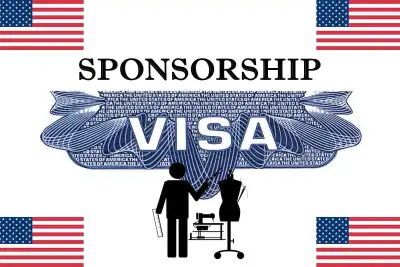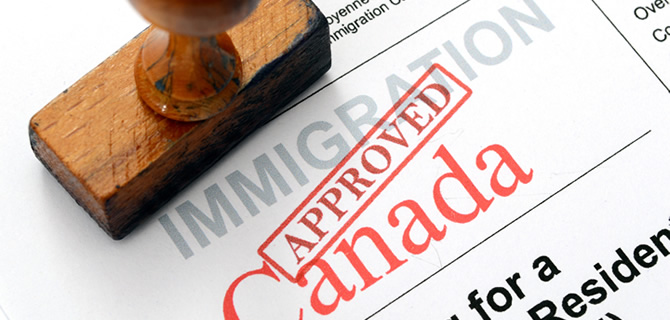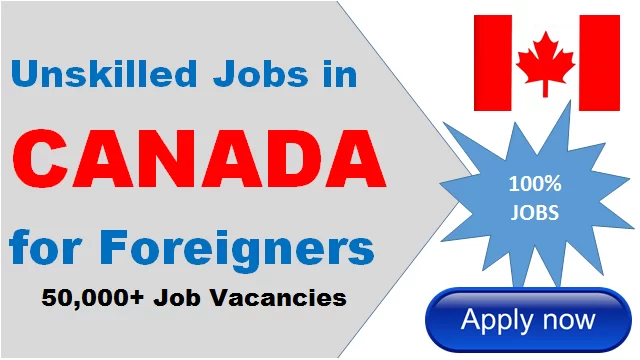How to Find Visa Sponsorship Jobs in the USA – According to The Daily on Statistics Canada’s Labour Force Survey (LFS), employment expanded at an exponential pace of 40,000 in May, resulting in a new low of 5.1 percent for the unemployment rate.
Young and middle-aged women working full-time in a range of industries accounted for the higher employment rate, with Alberta having the largest concentration.
The unemployment rate is predicted to climb during the rest of the year, particularly in June and July. Foreign nationals who want to move to Canada might take a risk and start looking for job in Canada to assure a long-term sustainable future.
In this post, we’ll guide you through the stages of looking for a job in Canada, the conventions of the Canadian work culture, and the abilities required to apply for a work visa in Canada.
If you wish to live and work in Canada, whether you’re a permanent resident, a Canadian citizen, or a temporary visitor, you’ll need a Social Insurance Number (SIN). A Social Insurance Number (SIN) is a nine-digit number that grants you access to government programs and benefits.
All immigrants are strongly advised to preserve their Social Security numbers and store them in a secure location. Failure to do so can have significant fraud consequences if it slips into the wrong hands. Here’s where you can learn more about safeguarding your SIN.
Finding a job in any nation, let alone Canada, is challenging. We’ve produced a clear overview of all the phases involved in the process since we recognize this. Will you let us lead you through the process of applying for a work visa in Canada?
- Use job search websites: Websites like Indeed, LinkedIn, and Glassdoor have a large number of job listings and many of them offer visa sponsorship. Simply search for “visa sponsorship jobs” in your desired field or location to get started.
- Network: Reach out to your professional network and let them know you are looking for visa sponsorship jobs. You may find leads through personal connections.
- Research companies: Look for companies that have a history of sponsoring visas for international employees. Many large corporations, especially in technology and finance, sponsor visas.
- Check with recruitment agencies: Some recruitment agencies specialize in helping international job seekers find visa sponsorship jobs.
- Look for events: Attend career fairs and job events targeted towards international job seekers. These events are great opportunities to network and learn about companies that sponsor visas.
- Utilize LinkedIn: Use LinkedIn to research companies and reach out to recruiters and hiring managers in your desired field. You can also join LinkedIn groups related to your industry and location to expand your network.
Step 1: Where do you look for your resources?
Canada has a wealth of resources available to immigrants who need assistance finding work in the country. As a starting point, here are a few examples:
Immigrant-Serving Organizations
These organisations are aware of the requirements of the Canadian working culture, which is why we strongly advise foreign nationals to use them. You can expect help with resume writing, job-specific training, and any other information you might need for the job you’re applying for.
Job Bank and Government of Canada Jobs are both worth looking into.
Feel free to look through Job Bank and Government of Canada Jobs, which are Canada’s official sites for Canadian employers who post jobs for immigrants looking to live and work in the country. The jobs that are being advertised can only be filled by local Canadians in the most extreme cases. As a result, employers will advertise jobs externally so that qualified foreign nationals can apply.
Find a Service Near You in Canada
Service Canada has all the necessary information for obtaining a work permit, as well as information on student employment, job postings, government contracts, and other relevant information.
Each Canadian province or territory faces its own set of challenges, so you should always do your homework on the employment opportunities and cost of living in that province or territory. Each province is distinct, which means that its standards and procedures are distinct as well. Before deciding to settle in Canada, it is critical to visit the provincial or territorial government’s website.
Step 2: Select your province or territory, conduct a job search, and apply for the position.
You may have a general idea of which province or territory you want to work in at this point, so the next step is to research the company where you want to work.
When looking for a job, we advise candidates to:
Always double-check the website’s legitimacy, as well as the legitimacy of the Canadian employers who are hiring immigrants; you want to make sure the designated employer is operating legally.
If at all possible, attend networking events where you can meet your potential employer and discuss the job’s conditions and expectations.
You can look into employment agencies that can assist you in conducting background checks on the jobs you’re applying for.
Word of mouth: the most obvious method is to ask friends and family to pass along any information about potential job openings. You might also want to inquire about the company’s reputation.
There are procedures to follow, just as there are for any other job you apply for. These procedures may differ from one province to the next in Canada. However, the procedure outlined below is fairly standard across Canada.
When submitting an application, we strongly advise candidates to:
- Provide a cover letter that explains why you are the best candidate for the job.
- Please submit your resume.
- Before you apply, make sure you have the necessary support structures in place to help you write your resume and cover letter.
- Prepare thoroughly for the interview, as this is your chance to make a good first impression.
- Whether or not you meet the requirements will be determined by the employer’s requirements. You can, however, improve your chances of landing a job in Canada by conducting necessary background research and receiving the necessary assistance before applying.
Step 3: Acquire the Required Work Experience
Gaining the necessary work experience and learning more about the Canadian working culture and standards is highly recommended. This is understandably not possible for everyone, especially if you are applying from another country.
In this case, you should have sufficient work experience in your home country so that when you land a job in Canada, you will be able to adjust to the working culture naturally as a result of your prior exposure.
Alternatively, if you are a temporary worker in Canada, becoming more involved in bridging programmes or volunteering in your field would be beneficial. Additionally, you can apply for the Federal Internship for Newcomers Program (FIN), which is designed to provide immigrants with work experience in Canadian organisations.
While volunteer work does not always result in a paid salary, it does provide valuable exposure to the Canadian work culture, the opportunity to rub shoulders with key industry players, and the opportunity to build a network of contacts.
Step 4: Educate yourself on your employee’s rights
Before you begin living and working in Canada, make sure you are familiar with the provincial and federal labour laws, as well as the terms of your work permit. The following pointers are crucial to remember as a Canadian employee:
In Canada, you have the right to join a labour union. Union dues will, in fact, be deducted from your pay.
If you believe your employer or union has treated you unfairly, contact the ministry official who oversees labour matters in your province.
You can also speak with a labour affairs officer by contacting or visiting the Service Canada Centre.
While you are still looking for work in Canada, you have the right to inquire about Employment Insurance (EI). EI’s goal is to provide you with financial assistance for a limited time while you look for work. It’s important to remember that if you find work in Canada, you must contribute to EI, which will come in handy when you need it the most.






